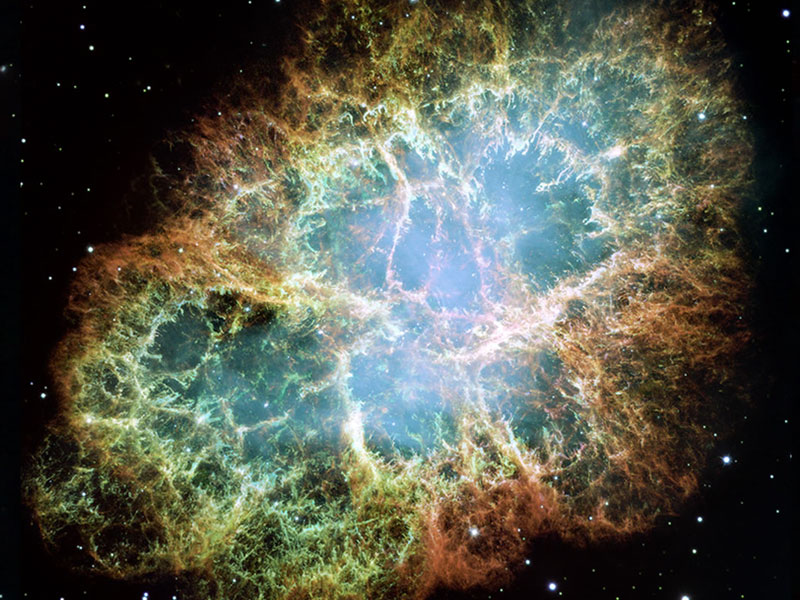 |
Астронет: Астрономическая картинка дня M1: Крабовидная туманность в телескоп им. Хаббла http://variable-stars.ru/db/msg/1226263/eng |
Credit & Copyright: NASA,
ESA,
J. Hester, A. Loll (ASU);
Acknowledgement:
Davide De Martin (Skyfactory)
Explanation:
This is the mess that is left when a star explodes.
The Crab Nebula, the result of a
supernova seen in
1054 AD,
is filled with
mysterious filaments.
The filaments are not only
tremendously complex, but appear to have
less
mass than expelled in the original supernova and a
higher
speed than expected from a free explosion.
The above image,
taken by the Hubble Space Telescope,
is presented in three colors chosen for scientific interest.
The Crab Nebula spans about 10 light-years.
In the nebula's very center lies a
pulsar: a
neutron star as massive as the
Sun
but with only the size of a
small town.
The Crab Pulsar rotates about 30 times each second.
Authors & editors:
Robert Nemiroff
(MTU) &
Jerry Bonnell
(USRA)
NASA Web Site Statements, Warnings,
and Disclaimers
NASA Official: Jay Norris.
Specific
rights apply.
A service of:
LHEA at
NASA /
GSFC
& Michigan Tech. U.
